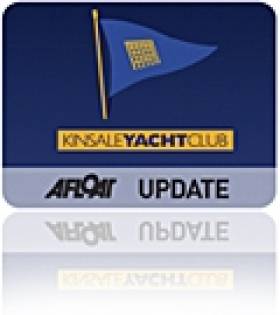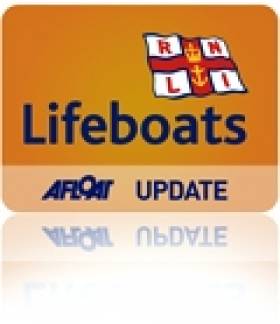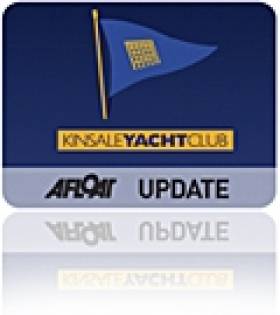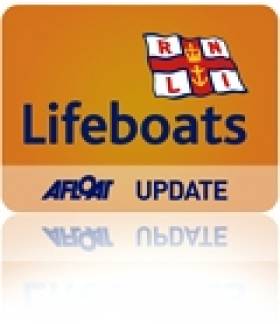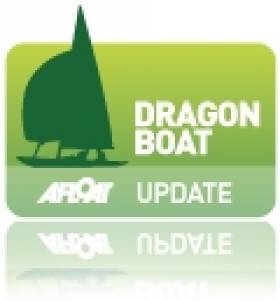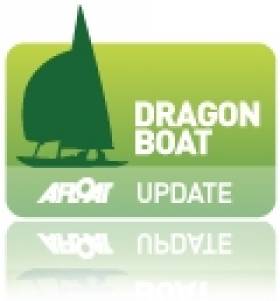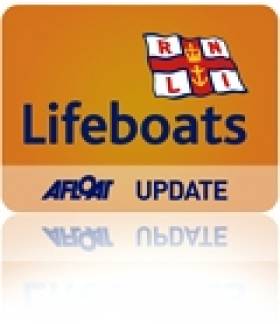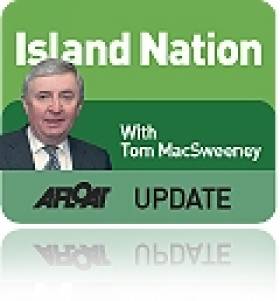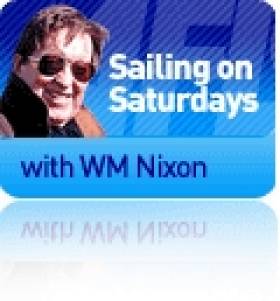Displaying items by tag: Kinsale
Kinsale Yacht Club Stages Inaugural President's Cup for Disabled Sailors
#disabledsailing – Munster were the winners of the newest prize in Irish sailing, the President's Cup for disabled sailors at Kinsale Yacht Club in County Cork over the weekend writes Claire Bateman. Ulster were second, Connaught third followed by Leinster who it is hoped will stage the event next year at a Dublin yacht club.
As Afloat previously reported, The Cup has been named in honour of ten times Paralympian, John Twomey who is the current President of the International Sailing Disabled Association. (ISDF)
A team of ten sailors from each of the four Provinces competed in four different classes: the Hansa 303, Skud 18, Squib and Sonar for this brand new trophy.
Saturday's racing in Kinsale Harbour consisted of one race in a north westerly breeze of about five to six knots and, after a short delay when the wind dropped, and the competitors waited hopefully for it to fill in again, it did oblige from the south east and a further two races were held.
The Sonars, Skuds and the Squibs sailed two rounds of a windward/leeward course and all started together. The Hanse 303s sailed just one round of the same course. Over 110 attended the lively dinner on Saturday night. The event was being sponsored by Kingspan.
Kinsale Lifeboat Crew Called Out Four Times in Three Days
#rnli – Volunteer crew of Kinsale RNLI were called out on four separate occasions over a three-day period last week. On Thursday 28 August at 12.44pm, Miss Sally Ann (Baggy) went to the aid of pleasure craft, The Spirit of Kinsale, which had become propped by ropes and lost power near Charles Fort. Assisted by Kinsale harbour master Cpt Phil Devitt and local divers Ocean Addicts, the crews from Kinsale and Courtmacsherry lifeboats were able to tow the vessel with 41 passengers and 2 crews on board to the safety of the marina.
Kinsale RNLI Helm Nick Searls said: 'The master on board the pleasure craft deserves credit for his calm handling of the situation, ensuring all passengers were equipped with lifejackets and made aware of emergency procedures. This reinforces the point that any vessel going to sea should have proper safety equipment and know how to react if they get into trouble.'
At 7.40pm that evening, the lifeboat launched for a second time to recover a yacht that had broken its moorings near the bridge. The unmanned vessel was carried down river and across the harbour, coming to rest on rocks by Scilly. RNLI volunteers towed to the yacht to the safety of the marina to ensure it would not present a danger to other shipping in the area. As rougher weather approaches, owners are advised to reinforce their moorings to avoid damage to their own and to neighbouring vessels.
On Friday 29 August at 6pm, a member of the public reported a young lad in a punt in the harbour who was in need of assistance. The lifeboat crew was quickly able to reach him on the shoreline near Castlepark and deliver him safely home.
On Saturday 30 August at 5.30pm, volunteer crew on a routine training exercise were summoned to assist a motorboat that had lost power in Holeopen Bay East. When efforts to restart the engine failed, the vessel was taken under tow and returned safely to its marina berth.
Courtmacsherry Lifeboat Tows Kinsale Passenger Vessel with 30 Onboard Back to Shore
#rnli – Courtmacsherry RNLI All Weather Lifeboat was called out at 12.36 this afternoon to go to the aid of a 46 ft Passenger Pleasure boat which encountered difficulties off Kinsale Harbour by Charles Fort. The Lifeboat with a crew of seven were underway immediately and together with the Kinsale RNLI Inshore Lifeboat reached the scene quickly.
The casualty boat had ropes entangled in its props and had lost power near the shoreline. Both Lifeboats have now succeeded in towing the Casualty back to Kinsale and it is now safely docked there. There were approx 30 passengers on board the passenger pleasure boat today when it got into difficulties. The conditions at sea today were strong winds blowing Force 6/7.
#kinsale – Last weekend saw a good event combining the Naval Yacht Squadron Haulbowline Base, Monkstown Bay Sailing Club, Kinsale Yacht Club and Neil Prendeville's Mary P Trophy annual race and cruise from Kinsale to the Naval Base at Haulbowline writes Claire Bateman. There was a fine fleet of twenty two yachts. The Mary P Trophy race has been sailed for many years and this year was to be a special with the proceeds going to the Kinsale Sailability Class. On Friday, August 22nd the yachts set off from the Naval Yacht Squadron and Monkstown Bay Sailing Club to berth overnight at KYC where they enjoyed their first night of entertainment of the weekend. On Saturday morning they departed KYC for a 12.55hr first gun leaving the Bulman to port and then on to Cork harbour where they left No. 18 to port, 20 to port and then finished between the naval tower and No. 15.
The highlight of the cruise was the evening reception held at the Naval base, by kind permission, and the yachts berthed overnight at the base before departing on Sunday for their home clubs.
Last night (Wed) at Kinsale Yacht Club the culmination of this event took place when the proceeds of the entry fees were presented to the Sailability Class Captain, Kevin Downing. This class was formerly known as The Access Class.
Next month, September (2014) Kinsale will host another event to be called the President's Cup. This will be awarded for interprovincial racing to be held between the various sailability classes. It has been named the President's Cup to honour John Twomey's tenure as President of the IFDS (International Federation of disabled sailors).
#rnli – Nineteen year old Lorcan Hickey from Kinsale in Cork received his Leaving Certificate results this morning (Wednesday 13 August), while heading out to sea on a lifeboat, from the RNLI College in Poole, Dorset. Lorcan is a volunteer lifeboat crewmember with Kinsale RNLI and received his results from his father Peter, over the phone, while away on a lifeboat training course at the RNLI College. The location was appropriate for the teenager, as he recently learned that under the Quercus Programme, he has been awarded a full four year Active Citizenship Scholarship from University College Cork (UCC). This scholarship is being granted based on his voluntary work with the RNLI.
Lorcan joined Kinsale RNLI as a volunteer lifeboat crewmember when he was 17 years old. He has been out on a number of call outs with the Cork lifeboat crew and is currently at the RNLI College with two other Kinsale volunteer lifeboat crew, Colum O'Sullivan and Matthew Teehan. This morning his parents, Peter and Frances Hickey, drove to the Christian Brothers School in Cork to collect his results to ring Lorcan and tell him that he had received 535 points. Lorcan wants to study Biological and Chemical Science in UCC.
Commenting on his results Kinsale RNLI crewmember Lorcan Hickey said, 'I'm delighted with my points. Obviously I would have liked to be with my family today but there was no way I was passing up the opportunity to come over to the RNLI College for lifeboat training. In many ways it has been the perfect place to receive the news and to celebrate tonight with lifeboat crew from all over Ireland and the UK. I am also really proud that the work I do with the charity has enabled me to receive an Active Citizenship Scholarship and I am very grateful to those that selected me for it.'
Loran's father Peter was also delighted back home in Kinsale and added; 'Even though Lorcan wasn't here, he wanted me to ring him the minute I had the envelope in my hands. He even wanted to hear the sound of me opening it. It was just like reliving my own Leaving Certificate experience. We are so proud of Loran and of all the young people who received their results today. Doing what he loves as a volunteer with the RNLI has given him such an incredible opportunities.'
As well as volunteering with Kinsale RNLI Lorcan is also a lifeguard at Garylucas beach.
Lack of Wind Scrubs Dragon Racing off Kinsale
#dragon – The second day of the Irish Dragon nationals at Kinsale in County Cork has been scrubbed due to lack of wind. Racing is scheduled to start an hour earlier tomorrow at 11am.
#dragons – On driving to Kinsale yesterday to photograph the 2014 Irish Dragon Nationals it was a miserable outlook with the rain thundering down in quantities not experienced for some months writes Claire Bateman. Even while waiting around in Kinsale the rain was still incessant. However, some thirty minutes later it was as if a miracle had occurred, the rain ceased, the clouds disappeared and the sun shone gloriously. The wind filled in from a different direction going from south easterly of some 15 knots with a lumpy sea to west/south west 12 knots.
With the marks re-laid on the windward/leeward course Race Officer Alan Crosbie got the race underway for the twenty one boat fleet of which ten are Irish and the remainder of the fleet are visitors from outside the country.
In Race two leading the fleet was Neil Hegarty, David Williams and Peter Bowring from the RStGYC sailing Phantom and, trying to make amends for a poor 15th in the first race, did just that by taking the winning gun. From the Kinsale team, a consistent result in both races was achieved by Cameron Good, Simon Furney and Henry Kingston sailing 'Little Fella'. They had a second in the first race and third in the second race. This result has now placed them at the top of the leader board. Following 'Little Fella' and second on the leader board is the wily fox from the RStGYC, Andrew Craig, sailing with Brian Mathews and Mark Pettit counting a first and a sixth.
The fleet is very strong and includes two former Olympians Robin Hennessy. who sailed in the 1972 Olympics in Kiel, sailing Aphrodite with John Wolfe and John O"Connor, sailing under the burgee of the Royal Palma Yacht Club. Making a welcome return to Kinsale is the second Olympian and Round the World Sailor Lawrie Smith with Adam Bowers and Jack Wilson.
The seven race series will continue until Sunday.
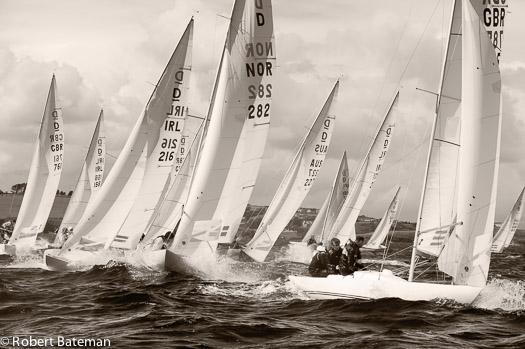
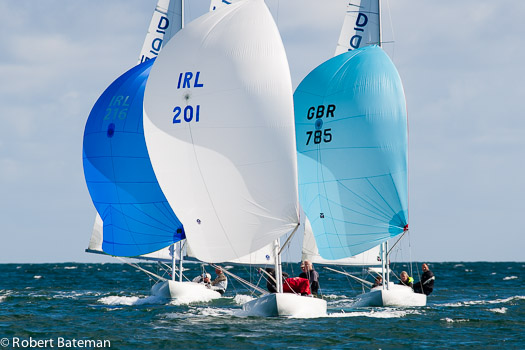
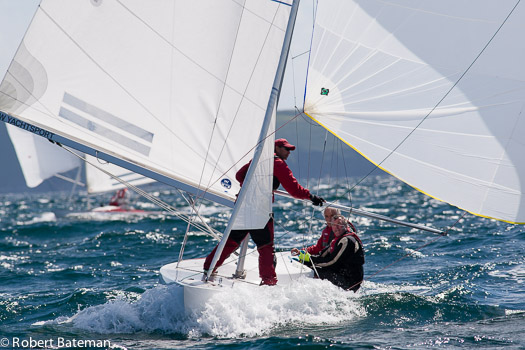

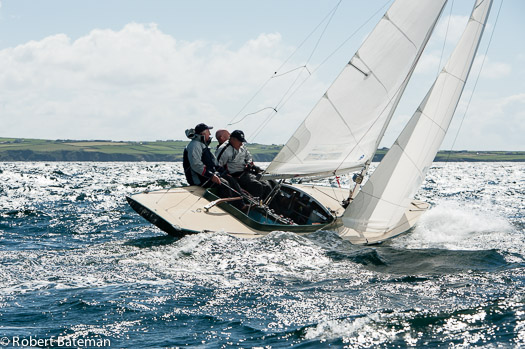
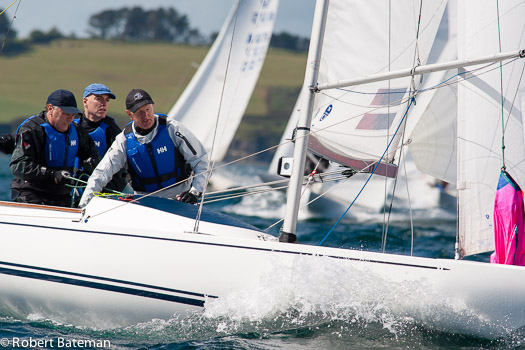


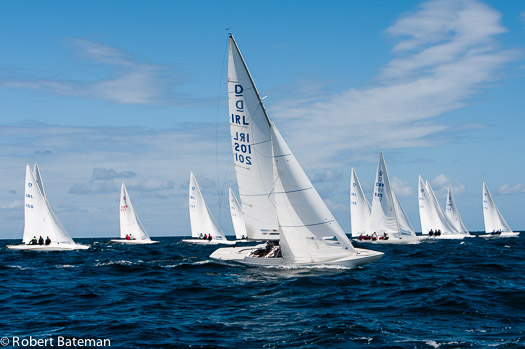
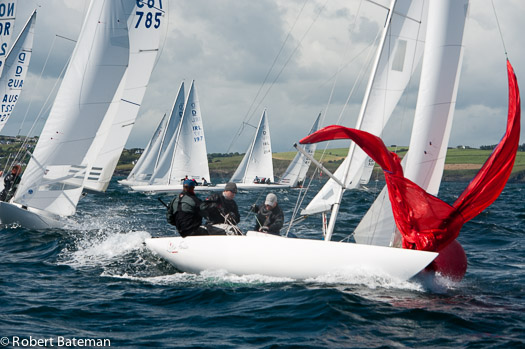
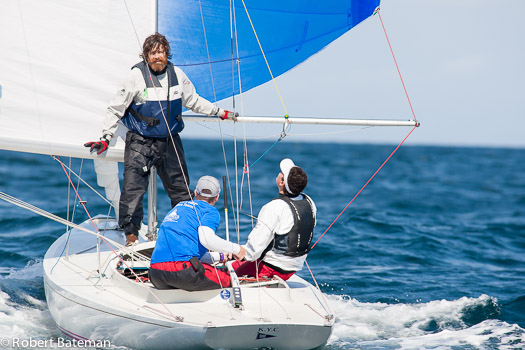
Skerries Lifeboat Launches To Swimmer In Difficulty
#RNLI - Skerries RNLI launched on Monday afternoon 16 June to a swimmer in difficulty off nearby Red Island.
The volunteer crew launched their Atlantic 85 inshore lifeboat Louis Simson shortly after 4.30pm.
The lifeboat, helmed by Joe May with crew members Eoin Grimes and Stephen Denny on board, made their way directly to the springboards bathing area, from where Dublin Coast Guard had received reports of a swimmer in difficulty.
Arriving on scene, the lifeboat carried out an immediate search of the area. It was quickly discovered that a member of the public, with the aid of a life ring, had managed to assist the swimmer back to shore.
The man was taken on board the lifeboat where first aid was administered. He was then brought back to the station where he was handed over to paramedics.
Weather conditions at the time were calm with a Force 1 southerly wind.
Speaking after the call-out, Joe May, May said of the casualty: "He was a very lucky young man that the life ring was in working order and that someone acted quickly.
"We would advise people to swim close to shore and remember that there can be very strong tidal currents around our coast."
In other lifeboat news, volunteer crew and fundraisers turned out in force at Kinsale RNLI on Sunday 15 June to welcome the annual visit by Sally Anne Odell.
Affectionately known as 'the godmother' to Kinsale RNLI, Odell was accompanied by a group of family and friends and arrived on a cruise ship in Cobh early on Sunday 15 June, where she was met by Kinsale lifeboat operations manager John O’Gorman and other volunteer crew members.
Odell and her guests were brought to the lifeboat station where they spent several hours chatting with crew members and inspecting the lifeboat Miss Sally Anne Baggy before returning to Cobh to rejoin the cruise.
O’Gorman said: "It is always a privilege and a pleasure to welcome Sally Anne home to Kinsale. We can never thank her enough for her generosity in providing Kinsale with its own lifeboat and our magnificent station.
"It is thanks to people like Sally Anne that the RNLI is able to maintain its role as the charity that saves lives at sea. She keeps in touch with us between visits is very well informed about what we do here. That’s why she is affectionately known as 'the godmother'."
#islandnation – Entering Kinsale Harbour, east of the Bulman Buoy, is a prominent 200-foot cliff rising sharply above the sea. It is known as Hangman Point and was the location of a gibbet, a warning to everyone not to engage in piracy. Displayed there in 1675 was the head of one of six Irishmen who had murdered the Master and three crew aboard what was described as "a very rich ship," the St.Peter of Hamburg which had been bound for France. This gang sailed the vessel to the West Coast of Ireland where they were captured by the authorities led by Robert Southwell, Vice Admiral of Munster. Convicted and executed, their heads were displayed at different points along the coast, including one at Hangman Point.
The next time I am rounding the Bulman heading for Kinsale I'll take more note of Hangman Point about which I hadn't known a lot, though I did know of the roadside reminder out towards the Old Head of Kinsale of the female pirate Anne Bonney, another story of piracy from the locality. She was actually Anne Cormac, described as "a vivacious girl" who lived with her father, William, in a fine house on the edge of Bullen's Bay which was a haven for piracy on the south coast not far from Kinsale, providing a place to land stolen goods and get water and provisions.
She shared the maritime activities of the area, but her father was actually a successful Cork lawyer who emigrated from that area to the Carolinas in America where the doughty daughter was drawn to the sea, despite the best efforts of her father to steer her in other directions. This led her to falling for the charms of pirate and buccaneer 'Calico' Jack Rackham who was terrorising the coast of Bermuda.
Anne took to the life of piracy, engaged in it by boarding ships and capturing and looting them and was regarded as a tough fighter. Despite pregnancies, she had her children fostered to continue her cutlass-bearing life. Captured eventually, both 'Calico' and Anne were sentenced to hang. Because she was again pregnant she was reprieved and her last words to 'Calico' before he faced the hangman, according to legend were: "If you had fought like a man, you would not now be hanged like a dog!"
I am not sure I would particularly like such a female type aboard, but out towards the Old Head of Kinsale there is a roadside plaque reminding passersby of Anne Bonney.
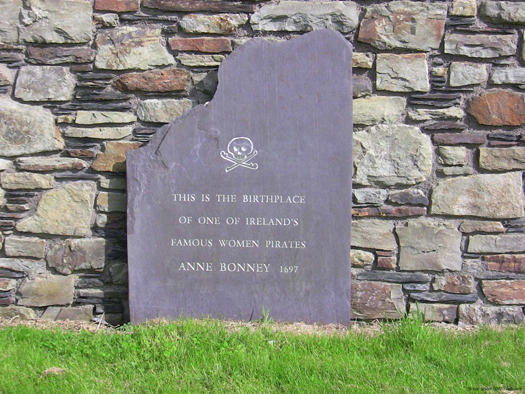
The story is told by John Thullier, well-known in the maritime world and in sailing after a lifetime involvement with boats. He is the retired Director of Kinsale Further Education College and steeped in the maritime tradition of the town. The College evolved from projects designed to introduce the maritime environment to students and providing training in marine skills.
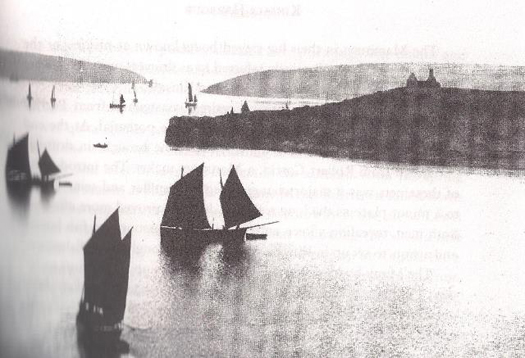
He has compiled the history of Kinsale Harbour and told me how, on walks around the seafront of the town with his grandfather who was a good boat builder timber needed would be spotted, with it all explained to him as a youngster about what a boat needed to be sturdy. John recalled to me how Sundays were the day of leisure, so the men would go sailing and, "in soft hat and with shirt and tie!" Those were times when there was a different approach to sailing clothing!
"Kinsale Harbour – A History," published by The Collins Press, was launched this week at Kinsale Yacht Club. In it John Thullier charts the history of a town now known best for its tourism and food, but which he says must retain its focus of being a port and a maritime location.
Nestling on the River Bandon as it sweeps to the sea, Kinsale emerged as a settlement in the 6th century and has seen many changes.
"Really there are three harbours here, the inner, the middle and the outer and Kinsale has changed over the years as it evolved to meet the many challenges," he said as we chatted overlooking the harbour from the front of the Trident Hotel where the statue of a fisherman, resting and thinking, reminds patrons that this too was once a big fishing port and still retains fishing boat activity.
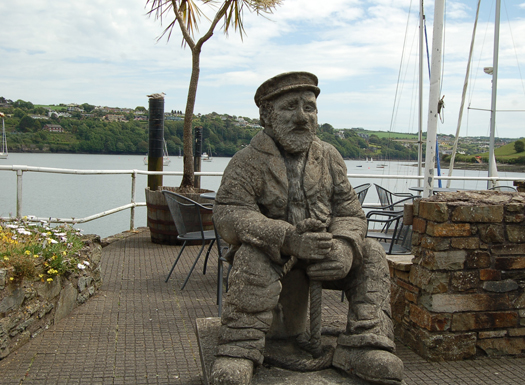
"The harbour has always provided a safe anchorage and prospered during the golden age of sail, victualling shops bound for the American colonies, the West Indies and trading with English and Continental ports. Many people will remember it for the Battle of Kinsale, but there is much more to the town and the maritime tradition is its main reason for existence. There was a Naval base to restrict threats of foreign invasion, there were pirates and smugglers, it was a shipping port, it evolved when the size of ships changed, it was a big fishing industry centre, that changed too as the industry and stocks moved. It still retains some fishing and it became a sea angling centre which gave it a new life.
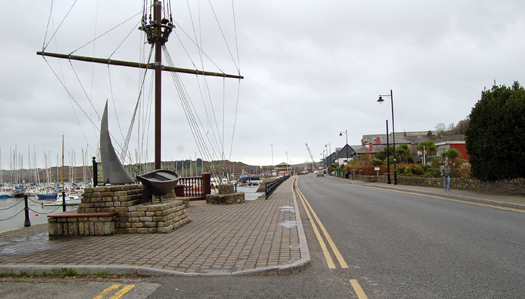
Now it is still very active in the marine, as a sailing centre. There have been difficult times here in Kinsale, but the way a town like this survives is to focus on what it has best, that is the maritime role, its maritime resources and facilities."
Even where we sat talking about Kinsale, where the Trident Hotel stands, he told me was once a dockyard.
"My mother's family was involved in the fishing industry, on my father's side the family were boatbuilders, owners and members of various boards and public bodies engaged in the affairs of the harbour.
"The story of Kinsale is the history of its connection with the sea. Everything about Kinsale is of the sea and so it should remain," says John Thullier, whose book about this major sailing location is well worth reading.
And if you want to know what happened to Anne the pirate, John Thullier says:
"No precise information is available about her after Rackham's hanging. There are reports that she abandoned piracy, was reconciled with her father, remarried and had eight more children."
I like a happy ending!
Twitter: @TomMacSweeney
ICRA Link–Up With Kinsale 2015 Underlines Cruiser–Racer Willingness To Guide & Go With The Flow
#cruiserracing – As we start to emerge from seven years of recession, we find the world of sailing has undergone changes which may have not been noticed in the struggle for economic survival. To prosper today, it seems that sailing must hope to be family friendly, and accessible to spectators and would-be participants alike. W M Nixon reflects on how this is working out in the macho world of cruiser racing.
The ICRA Nationals 2015 will be combined with next year's biennial Sovereigns Cup in Kinsale in order to make the event more user-friendly, and comfortably exceed the required critical mass in terms of numbers participating. It is an utterly logical development. And it's scarcely sensational breaking news, as the dogs in the street have been aware of it for a while now, even if an official announcement has yet been made.
But for those who were rather taken by the original notion of the Irish Cruiser-Racing Association staging an annual stand-alone national championship event, rotated around maybe as many as half a dozen centres, this may seem like a retrograde step from the high-flown idealism of the founders. And their vision certainly worked when the streets were awash with money, and people continued to subscribe to the notion that it was acceptable for offshore racing types to devote virtually all their free time to their rather expensive sport, regardless of how anti-social it seemed to family and friends (if they had any of either).
Now, however, the money's gone, and if anything its absence has accelerated the move towards shared recreation. Whatever rugged traditional amateur offshore racing may have been in its heyday, it scarcely qualified as shared recreation. Its austere joys were confined to the direct participants, while the outcome of each contest was an arcane matter to be teased out and analysed only by a very small number of aficionados.
Yet the boats it developed proved popular, with one of the by-products being the acceptance and development of cruisers which sailed well and could, if wished, be realistically raced. In fact, in Ireland in particular, many of these boats with lids are never cruised at all, and no-one ever even overnights aboard them. So after you've had yet another samey day sail round the same familiar old bay, the idea of a spot of racing has appeal.
A boat regularly raced with a modicum of enthusiasm and skill will attract regular crewmembers who want to be sure of getting their fix of sailing once or twice a week, but who also have other things to do – they've other sports, hobbies and interests to take up the rest of their time in addition to the increasing demands of family and social expectations.
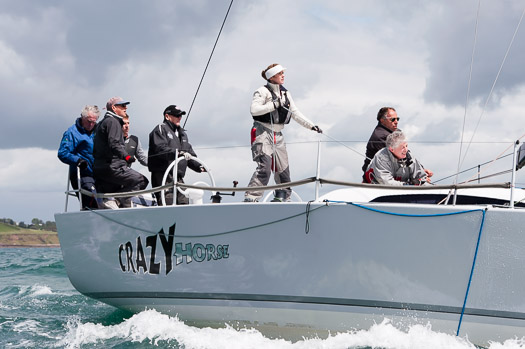
Steady steering afloat, and flexible management ashore....Nobby Reilly of Howth, Commodore of ICRA, helming his Mills 36 Crazy Horse. Photo: Bob Bateman
Lord knows it's all a very long way from the hundred per cent totally rugged offshore racing dedication of international legends like John Illingworth, Dick Nye, Carleton Mitchell and Adlard Coles, but this is the way we sail today. As for really serious stuff, we now leave that to highly-sponsored professionals in sailing machines. And as to any temptation to take part in challenging events, we focus on major happenings like the Fastnet and the Round Ireland. But the rest of the time, we seem to prefer a semi-inshore programme, and home in time for tea.
The ICRA management are a savvy bunch, and they are keen to provide what the market demands. In fact one of their number is Richard Colwell of RedC Polls, the noted opinion poll and market research outfit. His company is a bit busy at the moment – something about European and Local Elections next week – but once that's tidied away, he's going to run an exercise on what cruiser-racer folk really want in their annual programme.
It's not nearly as easy as it seems. If your organisation is going to benefit from successfully going with the flow, then you have to be able to outline a reasonably creative questionnaire structure to indicate where the flow might most usefully go in the first place. Chickens and eggs and all that sort of thing maybe, but good management has to manifest itself in many wonderful ways in a mixture of guidance and productive acceptance of the results of research.
However, before we look at how next month's ICRA Nationals in Dun Laoghaire are shaping up, the Kinsale link-up decision should be considered in the light of its effects on events beyond 2015. ICRA brings any co-operating club an unrivalled database and a hugely experienced race management and administration team. Thus, a neat linkup with an established regatta will confer enormous mutual advantages.
Yet surely it is essential for the good of Irish sailing overall - and particularly for the good of sailing at significant centres which are not holders of major biennial regattas – that from time to time the ICRA Nats continue to be staged as a stand-alone event?
Once the linkup has been made to the Sovereigns Cup at Kinsale, you can see the slippery slope with linkups to the Volvo Dun Laoghaire Regatta in Dun Laoghaire, and Cork Week itself. Carried to its logical conclusion, going with the flow to this extent would exclude other regatta-less centres on a permanent basis.
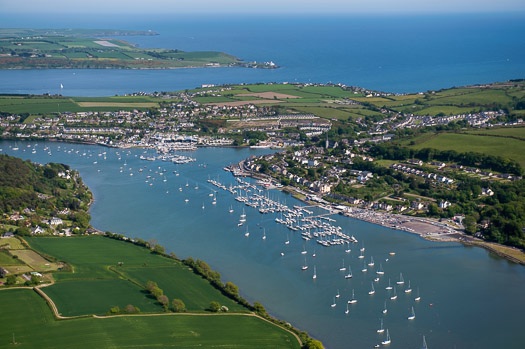 Crosshaven offers such a total package afloat and ashore, complete with a large ready-made home fleet, that smaller ports are at a disadvantage in competing to stage regattas. Photo: Bob Bateman
Crosshaven offers such a total package afloat and ashore, complete with a large ready-made home fleet, that smaller ports are at a disadvantage in competing to stage regattas. Photo: Bob Bateman
But that would be too totally at variance with ICRA's ethos of being a truly national body. And fortunately there is a let-out. Both the VLDR and Cork Week are held in July. The ICRA Nats have always been in either May or June. Thus although the Sovereigns Cup may be traditionally the last week of June, it's June nevertheless, and the basic integrity of the by-now traditional annual programme is maintained.
In the final analysis, it comes down the numbers game, and the Cork area and Dublin Bay start with an in-built advantage with their large fleets. In fact, Dun Laoghaire's enormous fleet puts it in a class of its own, and all sorts of special effects related to it being the harbour for a populous and burgeoning capital city come into play.
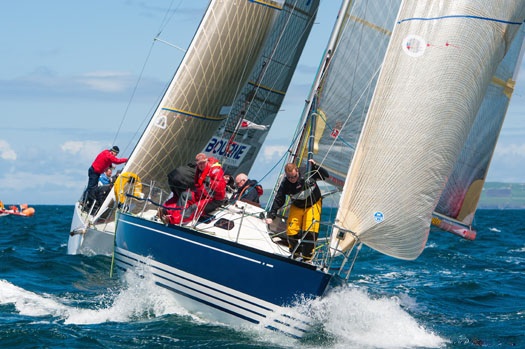 A brisk race, and back in time for tea – it's the way most cruiser-racers sail today. Photo: Bob Bateman
A brisk race, and back in time for tea – it's the way most cruiser-racers sail today. Photo: Bob Bateman
When everything falls into place, the numbers involved can be staggering. The increasing accuracy of weather forecasts plays a role in this. Last year, as the weather maps started looking a bit more healthy as the time for the four-day Volvo Dun Laoghaire approached, boats which had scarcely been racing at all were given a top and tail, they chatted their way through the late entry process, and crews were soon brought together for a sun-filled summer campaign in a record fleet.
It may sound a very hit and miss way to plan you sport, but that's the way we live now. Anyone in the hospitality industry in the West of Ireland can tell you that if there's a good forecast for the weekend, the Dubliners who can now reach them in a couple of hours on the motorway will be in contact, cutting last-minute deals. And if the weather's bad, those same Dubliners will either spend the weekend at home on indoor pursuits, or else they'll hightail to the airport to take up a late bargain on a day or two in the sun.
When volatility like that becomes the norm, management will have to be flexible or it will fail. Even in times past, "Surely you knew we'd be coming?" was a frequent greeting as some late un-entered would-be participant turned up at an Irish regatta. That said, if you're half serious about your racing, you'll have had it all – boats and crew alike - in place months in advance. But the latecomers will happily claim that such punctiliousness makes it even more galling when some bunch of hastily-assembled pierhead jumpers goes out and gets a good result.
Entries for the ICRA Nationals 2014 at the Royal Irish YC from June 13th to 15th went through the hundred mark this week when Darragh McCormack's Foynes-based J/24 Maximus became officially registered, and almost immediately afterwards Converting Machine from Pwllheli in North Wales came aboard, so progress towards the desired 120 is looking good.
That may seem optimistic with just four weeks to go, but Fintan Cairns of ICRA, who is monitoring the list and liaising with the RIYC, is a realist. Remembering what happened with the VLDR in the final days of countdown last year, he's keeping one eye on the met maps, and another on the current low entry in classes like the Sigma 33s and the First 211s. A bit nearer the time, and a cheerful weather prospect for mid-June will see those numbers coming to life.
That said, up at the sharp end, the serious entries have been in place for weeks, and it's already a cracker of a fleet. And even the most rugged traditionalist offshore racer who claims to enjoy nothing more than a 90 mile slug to windward will allow himself (or herself) to enjoy a bit of sunshine sailing in the bay.
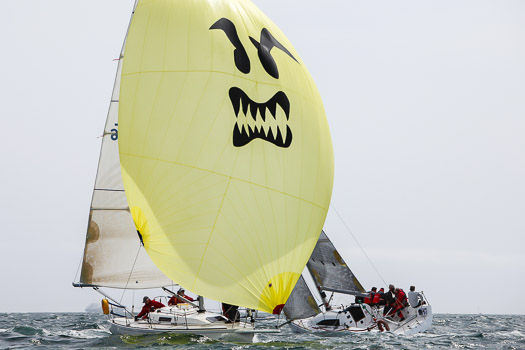 This sort of cruiser-racing is just the ticket for most crews – and they'd prefer not to be in an event which involves racing at night. Photo: Bob Bateman
This sort of cruiser-racing is just the ticket for most crews – and they'd prefer not to be in an event which involves racing at night. Photo: Bob Bateman


























